When I was a kid, my very favorite books were fantasy that had one foot in the real world—think Harry Potter, think Shadowhunters, think His Dark Materials, think American Gods, think Daughter of Smoke and Bone. In these stories, there was magic here—accessible through secret doorways or via enchanted trains or right in front of you, if you happened to get the glamour lifted. I think I loved these stories so much because they made me feel like the world was bigger than what I could see. Like magic might be out there for me, if I looked hard enough.
Even though it’s looking less and less likely that I’ll get that letter or find that doorway, I’m still obsessed with these kinds of stories—books that make me think for a second: maybe, just maybe. And today’s authors are weaving magic into our society in ever more imaginative, surprising, and inclusive ways. Read on if you want that feeling too—that glimmer of doubt that what you see is all there is; that moment of wondering whether magic will be just around the next corner.
The Diviners by Libba Bray
The Roaring Twenties are in full swing, and seventeen-year-old Evie O-Neill’s dreams are full of flapper dresses and glamorous parties. She has never given much thought to her ability to read people’s history by touching their possessions. But when an embarrassing hometown scandal obligates her to pull up roots and relocate from Ohio to NYC, she quickly becomes embroiled in the otherworldly. Her uncle, who runs a museum of the occult in Manhattan, is tasked with solving a series of terrifying and seemingly supernaturally tinged murders popping up throughout the city; and Evie wonders if she can help. A range of equally vividly drawn, magically gifted teens from all corners of the city round out the cast. There’s tons of fascinating period detail, and the dread feeling that the murderer is circling closer and closer to our heroes makes the six hundred pages race by. As a bonus, you’ll learn a lot of fun twenties lingo that will ab-so-tute-ly sneak its way into your everyday conversation.
Buy the Book
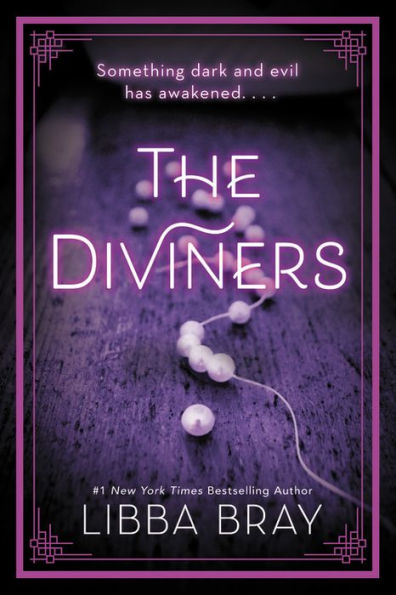

The Diviners
The Devouring Gray by Christine Lynn Herman
Set in the fictional but very, very real-seeming upstate small town of Four Paths, NY, The Devouring Gray starts out following Violet Saunders, who moves with her mother to Four Paths after the death of her sister. While creeped out by the town—which Herman drenches in claustrophobic atmosphere, creeping fog, and tree branches scratching at windows—Violet comes to understand she is inextricably tied to Four Paths’ history, alongside her peers Justin, May, Harper, and Isaac, all of whom are descended from the town’s mysterious founders. And something is amiss in the woods. Something is lurking among the trees, and it’s hungry. The teens must figure out how to defeat that ancient evil while dealing with their own traumas and complicated relationships with each other, their families, and the town. Herman situates her tormented, lovable ensemble cast amidst a backdrop of mounting dread behind a picturesque facade, and it all adds up to a tale that is equal parts delicious and unsettling.
Buy the Book
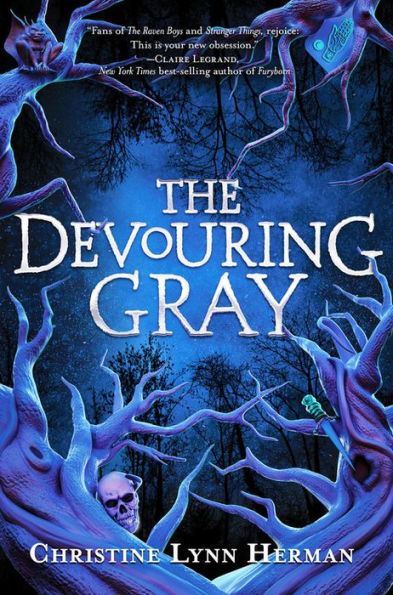

The Devouring Gray
Reverie by Ryan La Sala
Reverie is set in a middle-class industrial town in modern-day central Connecticut. Yet it feels a little bit misleading to say that, because in the pages of La Sala’s wildly imaginative debut, we will also encounter myriad other worlds–pocket worlds, dream worlds–which pose the very real risk of overtaking the aforementioned town. When the curtain rises on Reverie, Kane Montgomery’s life is fractured in a thousand different ways. He recently suffered a car accident that left him with strange scars and on the radar of the local police department, but he can’t tell them anything because he doesn’t remember the accident… or the months preceding it. He is isolated by his lack of memories, the homophobic bullying he’s encountered at school. And the people who claim to be his best friends are telling him wild, incredible stories about evil drag queens and dreams that come to life—and that he is instrumental to stopping the Reveries from overtaking reality. To be honest, this book is structured in such a fresh, unique way that I’m not sure I can describe it in a way that does it justice. Just go read it.
Buy the Book
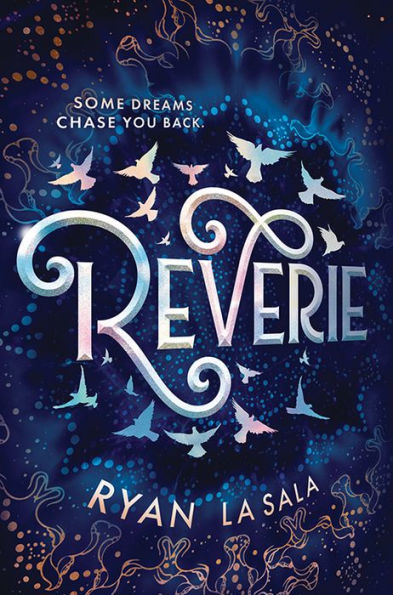

Reverie
The Epic Crush of Genie Lo by F.C. Yee
In the pressure-cooker environment of a Bay Area prep school, high-achieving sixteen-year-old Genie Lo will do whatever it takes to get into Harvard. But her plans are disrupted when she discovers that she is the reincarnation of an ancient weapon belonging to the Monkey King of Chinese mythology; furthermore, the obnoxious but cute new boy at school, Quentin, is in fact the manifestation of Sun Wukong himself. Oh, and there’s been a jailbreak in hell. A host of terrifying demons have escaped, and Genie must quickly get a handle on her newfound powers in order to dispatch them back. Yet she can’t defer her day-to-day responsibilities just because she’s singlehandedly responsible for saving the world–a mood that will be familiar to anyone who’s ever lost sleep over college applications. In between learning her abilities and kicking demon butt, she has to keep her grades up, deal with friend and family drama, and navigate the push-pull chemistry she feels with Quentin. The pace is breakneck, and Genie’s fabulously dry, sarcastic humor keeps things from feeling too heavy, even when the fate of humanity hangs in the balance.
Buy the Book
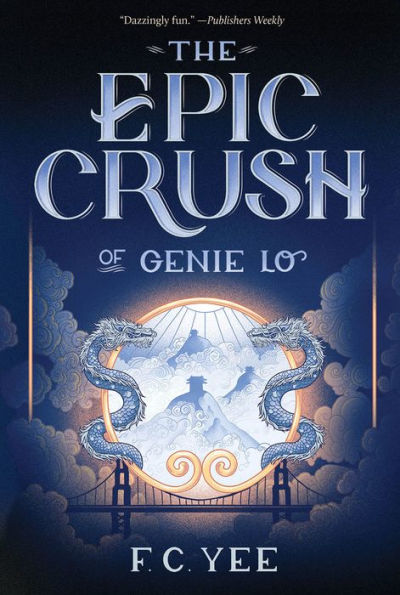

The Epic Crush of Genie Lo
The Golem and the Jinni by Helene Wecker
With apologies for over-representing NYC historical fantasy on this list, I’ll just say that this is a magical city teeming with magical stories. In 1899, two new arrivals appear on the streets of Manhattan. They are even more out of place than their immigrant peers: Chava is a golem, created out of clay. Made to be the wife of a man who died on the voyage from Poland, she’s now alone and adrift in the city. Meanwhile, Ahmad is a fire-formed jinni from the Syrian desert, who is accidentally set free by a tinsmith after centuries trapped in a copper flask. They must both create a life for themselves in this new, strange world of tenements and narrow streets and elevated trains; learn how to exist in a society that wasn’t made for them, and try to appear human. Chava takes a job at a bakery and wonders where food goes when she eats it; Ahmad works for the tinsmith, making it a point of pride to learn the craft of metalworking rather than just using his innate fire magic to get the job done. They meet a range of fascinating people in their neighborhood, from wizards to rabbis to ice cream makers; and when their own paths cross, sparks will fly. In the hands of a lesser author, the parallels between immigrants entering America and supernatural beings entering the human world might have been heavy-handed. But Wecker’s subtly gorgeous prose means it works, becoming an intricate, epic love story with a mythic feel.
Buy the Book
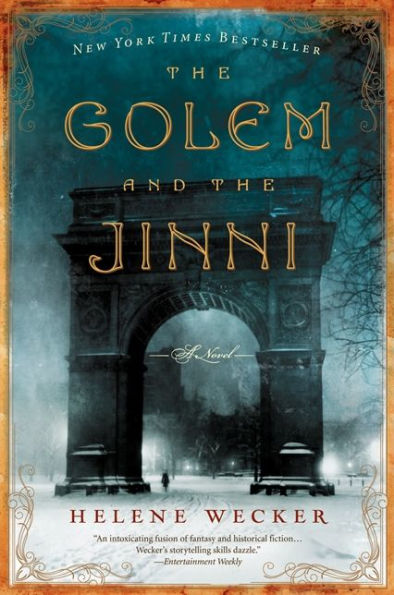

The Golem and the Jinni
Sara Holland is the author of the New York Times bestsellers Everless, Evermore, and most recently Havenfall. She grew up in small-town Minnesota, but also in the countless fictional worlds of books. She graduated from Wesleyan University and worked in a tea shop, a dentist’s office, and a state capitol building before heading to New York to work in publishing. These days, she can be found exploring the city’s bookstores or finding new ways to put caffeine in her bloodstream. Find her on Twitter @Sara__Holland.










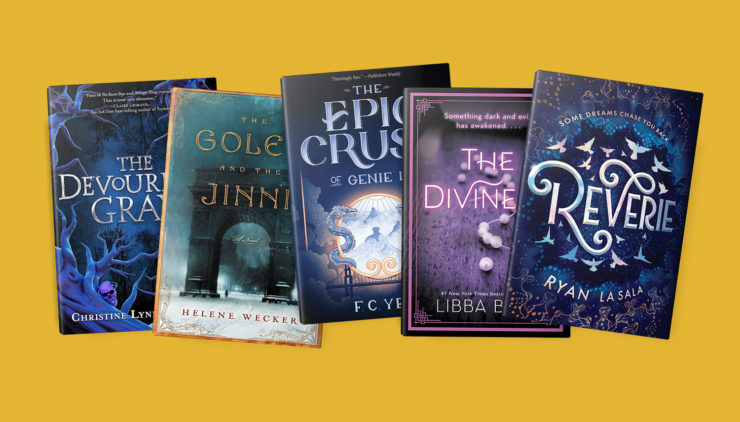
The Tales of Alvin Maker by Orson Scott Card.
Thirteenth Child / Frontier Magic series by Patricia Wrede
Night Calls, Kindred Rites, Spiral Path by Katharine Kimbriel
Hex Hall series by Rachel Hawkins – YA school of magic in the American South
The Last Hot Time by John M Ford.
Elves and men in Chicago.
Oh, there’s a lot of those:
the “October Daye” series, by Seanan McGuire– Northern California, fae and other supernatural from a mixed bag of legendaria
Borderline, by Michell Baker — the Fae as the muses of Hollywood
Winter Tide and Deep Roots, by Ruthanna Emrys – Lovecraftian-style Deep Ones in post-WW2 Massachustts and New York
The Narrows, by Alexander Irvine — demons in WW2 Detroit
Dreams of the Boardwalk, by Matthew Keville – magic at Coney Island
the “Shadowshaper” YA novels by Daniel Jose Older – magic in Brooklyn
Maggie Stiefvater’s “Raven cycle” books – dream magic in a perfectly realized Virginia. Also her All the Crooked Saints – I’ll-take-her-word-for-it Nevada.
… and that’s without including the just-like-America imaginary Americas and Weird Wests and such.
For a more pulpy, action style story in this theme, The Grimnoire Chronicles by Larry Correia is a fun, quick read.
Katherine Kurtz “Adept” series and Misty Lackey’s Bards/Elves/Guardian Witch Detective series were what came to mind for me. Plus Feist’s “Faerie Tale” of course.
Let’s not forget Rachel Pollack’s really wonderful (and funny) Unquenchable Fire.
#7: Mmm; strictly, Kurtz makes this list with a lesser-known novel, Two Crowns for America, rather than for the Adept books (which are set mostly in modern Scotland) — although I will grant that the “set in America” condition is more clearly specified in the headline than it is in the essay proper. And there are at least two other writers, I think, who’ve set fantasy series against the background of the Revolutionary War — one is Charles Coleman Finlay, with a series that opens with The Patriot Witch.
Some other notes:
One of my favorite — if obscure — Weird Westerns is the duology from M. C. Sumner beginning with Devil’s Tower (from Del Rey in the mid-’90s); Cherie Priest’s Boneshaker and its sequels are a good deal better known and well-reviewed, but didn’t work as well for me.
Given this list’s focus on young protagonists, I’d also note a couple of writers from that side of the library: John Bellairs, with a long list of wonderful adventures beginning with The House With a Clock in its Walls, and Richard Peck, whose Blossom Culp (introduced in The Ghost Belonged to Me) is very much the literary ancestor of a number of the heroines cited above. As a bonus, both the recent film version of Bellairs’ Clock and the extremely obscure Disney TV-movie Child of Glass (adapting the above-noted Peck novel) are worthy screen versions of the books, though as often happens, the Disney feature is a somewhat free adaptation of the source text.
great list, thank you